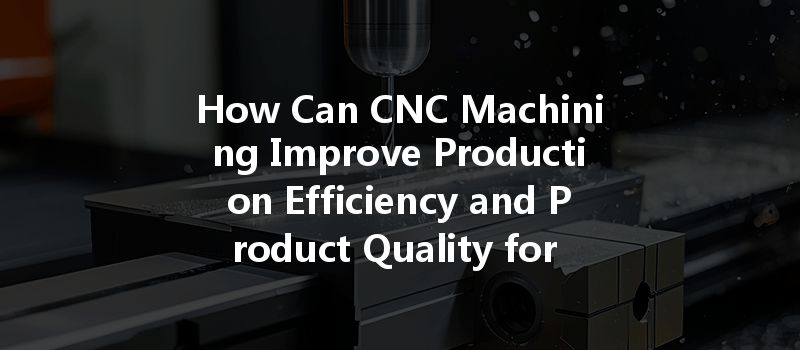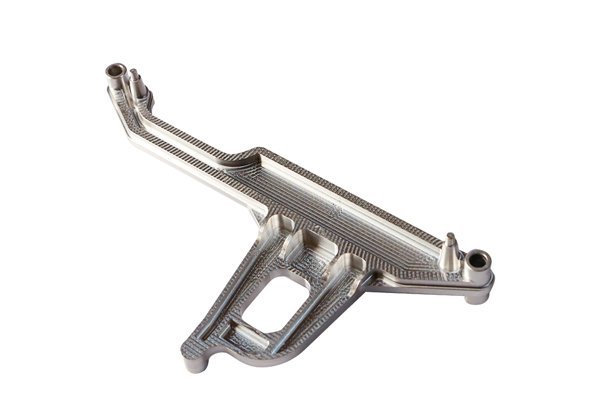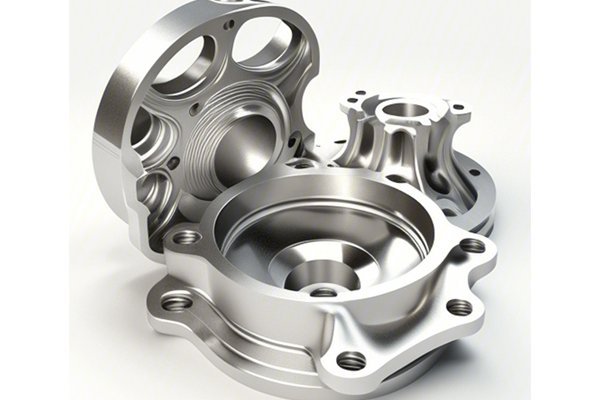Did you know that nearly 80% of manufacturers report that they face challenges in meeting customer demand due to production inefficiencies? In today’s fast-paced industrial landscape, manufacturers need to adopt advanced technologies to enhance their production capabilities. One such technology is CNC (Computer Numerical Control) machining, which not only optimizes production efficiency but also significantly improves the quality of the products manufactured. This blog explores how CNC machining can transform business operations by streamlining processes, minimizing wastage, ensuring precision, and ultimately delivering high-quality products.
The Basics of CNC Machining
Before delving deeper into the benefits of CNC machining, it’s essential to understand what it entails. CNC machining refers to the use of computer-controlled tools to remove material from a workpiece, enabling precise shaping of parts and components. This process allows for the automation of tools such as lathes, mills, routers, and grinders, eliminating many of the manual processes once essential to machining.
How CNC Machining Works
CNC machining begins with a 3D CAD (Computer-Aided Design) file that defines the dimensions, shapes, and specifications of the desired component. The CAD file is transformed into a CNC program—often coded in G-code—that instructs the machine on how to cut, grind, or mill the material.
CNC machines offer several fundamental advantages:
Why Production Efficiency Matters
Production efficiency is crucial for manufacturing companies for several reasons:
The Impact of CNC Machining on Production Efficiency
CNC machining significantly enhances production efficiency through various mechanisms:
CNC machines streamline the production process, requiring fewer operators. With a CNC setup, a single technician can oversee multiple machines simultaneously, effectively reducing labor costs while maintaining high output rates.
The automated nature of CNC machining drastically cuts down the time from design to production. Rapid prototyping capabilities mean that manufacturers can perform quick iterations of designs, enabling faster product launches.
CNC machines excel in producing parts that meet the same specifications and quality repeatedly. Once the original program is developed, the same parameters are consistently followed, leading to uniformity across batches. This consistency is crucial in industries such as aerospace and automotive, where any deviation can lead to failures in safety and performance.
CNC machining optimizes the use of tooling by controlling cutting speeds and feed rates based on material properties. Proper setup reduces wear and tear on tools, resulting in a longer lifespan and lower costs for tool replacement.
CNC systems frequently involve quick changeovers. Changing a CNC machine from one part to another takes a fraction of the time compared to traditional machining practices, allowing manufacturers to switch production lines rapidly in response to demand changes.
Improving Product Quality through CNC Machining
Beyond improving production efficiency, CNC machining directly influences product quality in several impactful ways:
CNC machining allows for precision manufacturing of complex geometries that are often impossible to achieve with traditional methods. Advanced technologies such as multi-axis milling enable manufacturers to create intricate designs while maintaining tight tolerances.
Many modern CNC machines come equipped with advanced monitoring systems that track the machining process in real-time, ensuring any variations from desired outcomes are corrected immediately. This proactive quality control minimizes defects and rework, enhancing the overall product quality.

CNC machining allows for the optimization of material usage. Engineers can calculate the exact amount of material needed for a particular design, reducing waste while improving the integrity of the final product.
CNC machines facilitate various finishing techniques, including grinding, polishing, and anodizing. These processes enhance the material’s aesthetic and protective properties, improving corrosion resistance and overall durability.
CNC machining can be integrated with other manufacturing processes, allowing for a streamlined workflow that encompasses everything from raw material preparation to finishing. This integration reduces the chance of errors and increases overall quality assurance.
Solutions for Common Challenges in CNC Machining
While CNC machining offers numerous benefits, manufacturers may encounter challenges that impede efficiency and quality. Here are some solutions:
Problem: High Setup Costs for Custom Parts
Solution: Utilize Modular Tooling Systems
Modular tooling allows manufacturers to interchange parts easily and reduce the time spent on setup. By investing in a modular system, businesses can lower their overhead costs while increasing their production versatility.
Problem: Inconsistent Part Quality
Solution: Implement Statistical Process Control (SPC)
SPC involves monitoring and controlling the machining process using statistical methods to maintain consistent quality. By analyzing data from production processes, manufacturers can quickly identify trends that may lead to issues, enabling quick corrective actions.
Problem: Tool Wear and Breakage
Solution: Invest in High-Quality Tooling and Maintenance
Using premium-quality tooling materials and regularly maintaining equipment can significantly reduce the frequency of tool wear and breakage. Establishing a maintenance schedule ensures that tools operate at peak performance, thus prolonging their life.
Problem: Difficulty in Machining Complex Designs
Solution: Leverage Advanced CAD/CAM Software
Investing in state-of-the-art CAD/CAM software enables designers and engineers to create complex designs with ease. This software not only aids in design but also optimizes machining paths, ensuring that CNC machines operate efficiently.
Case Studies: Success Stories with CNC Machining
To illustrate the real-world impact of CNC machining, here are a few case studies demonstrating its efficacy in improving production efficiency and product quality across various industries.
Case Study 1: Aerospace Components Manufacturer
A leading aerospace components manufacturer faced delays in their production cycle, impacting their ability to meet delivery deadlines. By integrating CNC machining into their operations, the company reduced setup times and significantly improved the precision of their components, leading to a 30% reduction in production lead time. The quality of the parts also surpassed previous standards, complying with the rigorous demands of the aerospace industry.
Case Study 2: Medical Device Production
A medical device manufacturer required extreme precision to comply with regulatory standards. By transitioning to CNC machining, they achieved tighter tolerances and improved product consistency across batches. This shift not only increased customer satisfaction but also decreased the number of recalls due to defects, enhancing their market reputation.
Case Study 3: Automotive Parts Supplier
An automotive parts supplier aimed to improve efficiency while maintaining product quality standards. After implementing CNC machining, they experienced a 20% reduction in production costs, primarily due to decreased labor requirements and minimized material waste. Additionally, the durability and performance of their components improved significantly in comparison to their prior processes.
CNC machining presents an unparalleled opportunity for manufacturers aiming to elevate their production efficiency and product quality. Through the automation of processes, reduction of labor costs, and the precision it affords, CNC machining provides a critical edge in the competitive landscape.
The quality benefits, including enhanced precision and integrated quality control, ensure that products not only meet but often exceed industry standards. As businesses navigate challenges in the face of evolving markets and customer expectations, CNC machining emerges as a transformative force capable of delivering long-term success.
In the modern manufacturing environment, embracing technological advancements like CNC machining is not just beneficial—it’s essential. By harnessing the advantages of CNC machining, businesses are better equipped not only to meet current demands but also to thrive in the future. Whether you’re a small shop or a large industrial manufacturer, the investment in CNC machining technology can redefine what’s possible and set your enterprise on a course to sustainable growth.
As you consider the implications of this technology, it’s crucial to reflect on how advancements like CNC machining can bridge the gap between efficiency and quality, shaping the future of manufacturing for generations to come.
Related Posts
- Is CNC Milling an Effective Choice for Prototype Machining of Composite Materials in Modern Manufacturing?
- Why Does Brass Experience Increased Corrosiveness After CNC Machining? Causes and Solutions
- How does the choice of tool material in CNC machining impact the accuracy and quality of finished parts?






